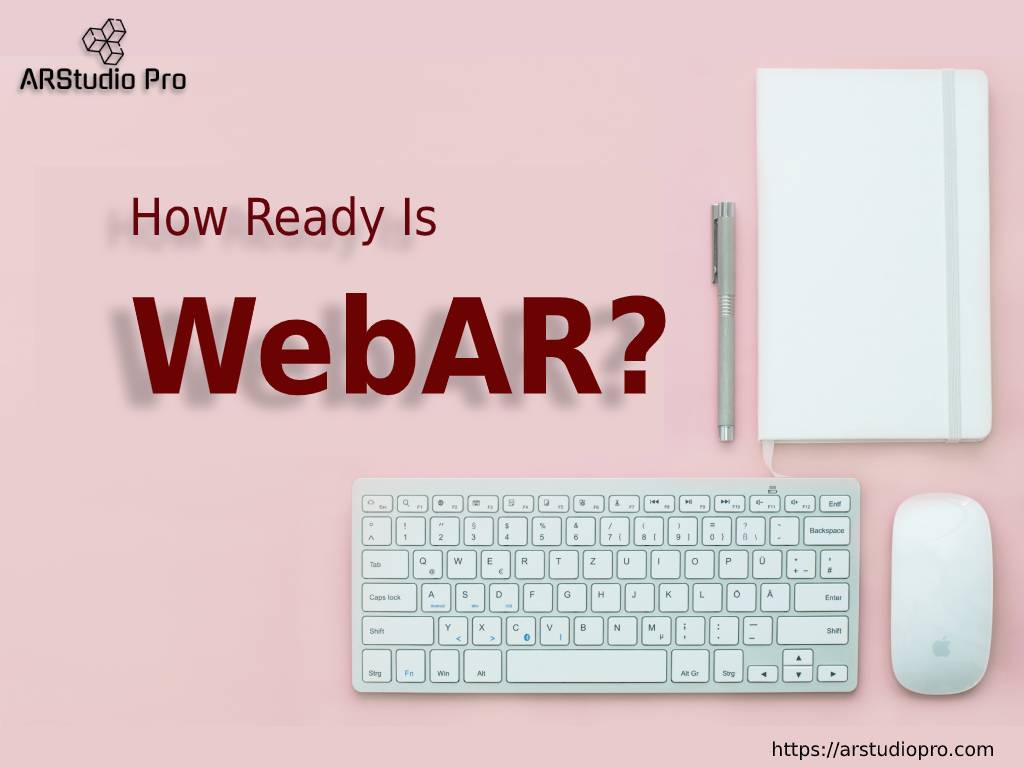
How Ready Is WebAR?
March,2020
Most people have heard of augmented reality (AR). AR, not to be confused with virtual reality, allows users to experience interactive virtual objects that display above the real environment. A large number of brands and companies have already used augmented reality in their marketing and as a tool in the workplace; however, for most people, the launch of Pokémon GO in 2016 was the first time they had experienced this technology. One of the big issues with using augmented reality for business or consumer experiences is that, until recently, it depended on users downloading and installing an app and running it. Being confined to apps creates a barrier between the AR and the user, as this is just one more step they need to go through before accessing an experience.
So what is WebAR and how is it going to make a difference?
Simply put, WebAR has augmented reality that takes place in your browser. Eliminates the need to download specific apps - users can access AR-compatible websites and enjoy the same features and functionality. This technological advancement will dramatically increase the potential reach of the consumer experience, as using augmented reality apps will be as easy as clicking on a link sent to you by a brand, friend, or employer.
WebAR started by allowing users to place static objects in their real world and interact with them. This in itself was a breakthrough in browser technology and gave a real insight into the possibilities of creating web-based AR content. Since then, there have been great strides in the capabilities of WebAR, with some really interesting experiences that have been made public.
More recently, Sony Pictures launched a WebAR experience for Spider-Man: Into the Spider-Verse, which allowed users to interact with a 3D character, take photos, and share their images on Facebook, Twitter, Instagram, and other social channels. The entire experience is accessible in the browser, without having to download a separate app. But Web AR is more than just fun and games - it will completely revolutionize the retail industry. Consumers will be able to view a product in 3D from the comfort of their home, without having to install a dedicated application and create an account.
Why consider WebAR?
Studies show that by adding interactivity to content, messaging can be up to 80% more efficient. That's right that information can be up to 80% stickier in the user's mind. Plus, you can now share AR content right from your website. You don't need to send users to a third-party site like Facebook, Snapchat, or TikTok. You can start WebAR experiences from any URL you want. Similar to static websites, there are also many tracking and analysis tools available when using WebAR.
What are the benefits?
As already mentioned, the main advantage of WebAR is the fact that you don't have to download an app directly to your device. With the app, size, data allocation for download and device type, etc. can be a barrier for people to use AR, but WebAR makes it more easily accessible and doesn't consume people's data through large downloads, which in turn helps AR campaigns and experiences to be more relevant and useful. WebAR can work to some extent in most browsers, so you don't need a specific device specification to support RA, which further increases the reach of a particular experience.
A common hurdle for enterprise AR applications is the often complex process of moving applications to employee smartphones. Most businesses have a centrally managed organizational app store that pushes apps to every user device, meaning any update to an experience or tool shouldn't just be integrated with the app, but must also go through different stages of publication to reach employees.
Web AR will effectively simplify this process, as approved updates can be deployed to a website, so there will be no apps to update. Users can simply access the online experience and automatically see the latest updates that have been sent to the site. There will be no need to worry about memory space on working devices; there is nothing to download, as the experiences will take place in the user's browser.
The technology and format of the object:
You can choose almost any software to create your 3D models and animations. Be careful which one you choose - it should work with whatever technology you'll use to create the experience. Not all programs support all formats. It is almost impossible to resolve this issue in the later steps because conversions are unreliable.
Accessibility and user-friendliness:
Aircards creates WebAR experiences for mass consumption with over 2.9 billion WebAR-enabled smartphones that can display AR Aircards experiences. 5 years ago I would have struggled to launch a WebAR campaign and have no issues, but in 2020/21 everything changed. Any WebAR experience developed by our team is focused on user experience with fast load times, aesthetic HUD design, and cleverly placed call-to-action buttons to increase clicks.
Deployment speed:
Previously, the development of dedicated AR applications could take anywhere from 6 to 12 months, or even more, to market. Combine that with App Store approval and all the other frustrating tasks to get them enabled- apps aren't built for speed of deployment. As an example, Jackson Hogg contacted us to create this WebAR brochure to promote his business at a trade show. They had a tight deadline, but our team accelerated the development and delivered it on time for their salon.



